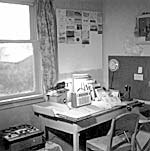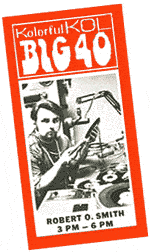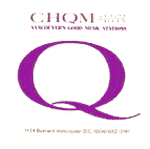The Jon Pearkins Collection
|
Jon Pearkins grew up in greater Vancouver on Canada's West Coast. Radio was a huge part of his life for 13 years, first as a Top 40 listener, then a DXer and finally a DJ. Unless otherwise indicated, the airchecks heard here were recorded by Jon, but since he never collected and traded airchecks, they are exclusive to REELRADIO.
Over the years, beginning February 9, 1962, his favorite stations have been CFUN Vancouver, KJR Seattle, CKLG Vancouver, WBZ Boston, WLS Chicago, KYMN Oregon City, TGJ Guatemala, KOL Seattle, CJOR Vancouver, KGA Spokane, CKLG-FM Vancouver, CKVN Vancouver, KTAC Tacoma, CKRA-FM (K-Lite) Edmonton, CBX-FM Edmonton and CKUA Edmonton. For more than 30 years, his favorite DJ was the late Robert O. Smith, known best for his 1966 hit record "Walter Wart, the Freaky Frog", which can still be heard regularly on Dr. Demento's syndicated program. From 1968 to 1971, Robert O. did afternoon drive on KOL Seattle. Jon remembers, "Listening to Robert O. really taught me by example what I needed to know about working in radio. Here was a guy without a big ego who could react, second by second, to what he was saying just as a listener would." Jon started out in 1969 at 5 watt pirate station CFAY in Surrey (as George Walker). His next stop was Simon Fraser University's CKSF (now CJSF), then UBC's carrier current CYVR (now CiTR). His big break came in June 1971, when CHQM AM & FM hired him as an operator. After nearly a year at QM while going to university, a friend got him a summer job announcing at CJAT AM & FM in Trail, B.C. CJAT-AM was a well-run Top 40 station that even charted songs no one else played, but Jon was stuck in the lackluster FM station most of the time. That only lasted six weeks, and he spent the rest of the summer on the air at CFPR in Prince Rupert, managed by a rising star from CBC Toronto. His final radio job was part-time at CFYK in Yellowknife in Canada's Northwest Territories in late 1974. Since then, Jon has been in computing in Edmonton, but hopes to retire soon and get involved in radio again. "After reading that famous Billboard article about starting in radio at 18 in Fresno for $600/month and ending up back in Fresno at 30 for $850, I was too scared to think of radio as a career. Even though my best friend thought I would never come back from CBC Prince Rupert in 1972, the idea never entered my mind to do anything other than go back to UBC for third year Computer Science." The Repository thanks Jon for sharing! |
Although not typical Daryl B., this composite combines two unique events in his career. The aircheck begins with the only time that CKLG ever made #1 in the official Canadian BBM (Board of Broadcast Measurement) ratings for Vancouver: the broadcast of the original History of Rock & Roll during Ratings Week. Not a small feat, considering it marks the only time in more than 45 years that information station CKNW was not #1.
The remainder of this composite is Daryl’s only guest appearance on CKLG-FM, doing the second of three monthly specials that the station did using AM DJs. Events dictated the topic: supergroup Buffalo Springfield had just broken up on May 5. Daryl knew group member Neil Young through his best friend Rick Honey, who played in a Winnipeg garage band with Neil, hence the “we” references during the special. Because the original recording was made for the music, not as an aircheck, the commercials were removed, which accounts for the awkward transition between certain sentences: there was actually a commercial in between.
Daryl Burlingham came to Vancouver and CFUN in late 1965 from CKY Winnipeg, having previously been at CKRC Winnipeg and CFQC Saskatoon. In March 1967, he moved to CKLG, staying until he got the opportunity to join CKLW Windsor near the end of 1969. But he missed the West Coast and returned to CKLG in August 1970, moving back to CFUN shortly after CHUM Toronto bought them in 1973, then to CHUM itself in the early ’80s until Post Polio Syndrome forced his retirement.
Even if you do not remember the distinctive voice, you always knew it was Daryl because he ended his show with the phrase “Stay out of Trees”. This CKLG-FM broadcast may be the only time in his career that he did not say it.
CKLG-AM had just celebrated its 10th anniversary when it changed format from The Foreground Sound to Top 40 on August 22, 1964, the day the Beatles first came to Vancouver. Lloyd Moffat had purchased the station in 1961, but his unexpected death earlier in 1964 left his young song Randy with 8 radio stations across Western Canada that he quickly changed to Top 40. CKLG remained with its format and call letters until it became the All News sister station to CKNW on February 1, 2001.
Meanwhile, the Muzak-inspired Foreground Sound moved to CKLG-FM, still unable to compete against CHQM’s dominance in that format. In 1967, LG-FM tested the appeal of an Underground format with a weekly program of New World African music, as host Bill Reiter likes to call it. Groovin’ Blue expanded to daily and, by early 1968, the station hired John Runge from CKUA Edmonton as Music Director and went Underground full-time. They explored the full range of the format, even playing some classical, but eventually settled into progressive rock — popular cuts from popular rock LPs — before self-destructing in the mid-’70s in a failed unionization attempt. Their focus and call letters changed to CFOX shortly after.
At age 58, Daryl B. passed away February 27, 2001, in Winnipeg, having suffered a massive stroke shortly after hearing of Rick Honey’s death. Rick spent most of his career, more than 20 years, at CKNW, where he was usually heard on afternoon drive. CKNW hired him from CKLG during a period of recruiting top young local radio personalities. Rick started out at 16 at CJOB Winnipeg, then to Northern Ontario and the Maritimes before CKLG. Rick died in Vancouver after a long battle with throat cancer February 24, 2001, at the age of 54. His last air shift was morning drive Feb. 22 on CKBD Vancouver.
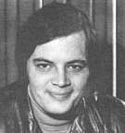

Lan Roberts Promotional Picture, 1969
Hallowe’en 1969 was a day to remember on KOL. Lan Roberts (d. December 30, 2005) created the ultimate promotional vehicle with “The World’s First International Garbage Record Festival” to draw listeners to “The World’s First International Garbage Film Festival”. At midnight Hallowe’en night, a chain of six local theatres was showing a double bill of rotten films. “Billy the Kid versus Dracula” and “Jesse James Meets Frankenstein’s Daughter” were both misguided attempts from three years earlier to combine Western and Horror genres.
Amongst the rotten records aired, only two ever made Billboard’s Hot 100, and were not on that week’s KOL chart. Certainly a major departure for 7:03 a.m. in Morning Drive, when this aircheck begins. It ends with more usual morning fare, including two songs from the chart that week, even if one starts at 78 rpm and the other was a local hit in the Jet City.
The commentary on current news items was a Lan trademark, heard as the aircheck tape rolls off the end of the reel. Other trademarks, heard during the festival itself, include Lan’s Hollywood Reporter and Phil Dirt characters. As well as two songs about Phil, you will also find that Phil finds something definitely erotic about the sound of trains.
As odd as this hour is, the height in oddity is reached as listener Patty McKnight drops by during Lan’s show and lends him her copy of “The KJR Concerto”, which Lan airs, complete with dated KJR jingles. When it’s over, the Hollywood Reporter even refers to KJR’s most famous name: Pat O’Day.
Hallowe’en had been heavily promoted for more than a month on KOL. In addition to the International Garbage Record Festival, Afternoon Drive was highlighted by two airings of Robert O. Smith’s Hallowe’en Horror Movie.
As for KOL jingles during this period, they were often experiments and changed frequently. You will only hear two here, one following the first “train” record and a second at 56:38 into the aircheck. The truth is, several of the DJs just did not like jingles.
Don Chambers does news headlines at 20 past the hour and complete news at 20 to the hour. Production Manager and 9-noon DJ Terry McManus promotes an upcoming Moody Blues concert at 29:28 into the aircheck. Newspaper columnist Emmett Watson is heard at 8:00 a.m.
This was the start of KOL’s most successful period against the unbeatable KJR. Lan Roberts had been PD for several months, but just started on Morning Drive after a KJR lawsuit was settled. It was an about-face from their earlier Drake style.


It would be hard to imagine any worse on-air assignment than to sign a station on at 9:00 p.m. on a Sunday night and sign it off again at 2:00 a.m. The last half hour is heard here and, from what he says, it sounds like Mike Lundy’s only weekly shift at KGBS. At 5:12 into this aircheck, he names the announcers who work weekdays at KGBS.
The “Now Sound” format seems like an adults-only version of Top 40: an emphasis on current songs from across the musical spectrum, including country hits not played on Top 40 and new material not yet on Billboard’s charts. Plus, lots of jingles.
KGBS was one of those uniquely U.S. institutions: the daytime-only radio station, only with a twist. Their FCC license for clear channel 1020 KHz gave them the right to be on the air while KDKA Pittsburgh was off the air for weekly transmitter maintenance — midnight to 5:00 a.m. Eastern time Monday morning. Presumably, if they were not on the air then, they could lose that right. But, it is hard to imagine any Manager ever forseeing any money to be made by being on the air then.
It is also hard to see any money to be made running a 50KW daytime-only station in a major market. Like KGBS, most had simulcast FM stations that did not have to sign off at sunset, but the minority of Americans who did own FM receivers in 1969 usually had only one, and it was located in the living room. But, better times were coming soon for KGBS: the teaming of Bob Hudson and Ron Landry on mornings. Two of their comedy bits hit the Billboard Hot 100 in 1971 and ’72.
As Mike mentions, this weekly time slot was heard far and wide, making KGBS well known among long distance radio listeners. It undoubtedly drew more mail than all the rest of the station’s programming put together.
[Uncle Ricky adds: Mike Lundy produced radio programming for Japanese stations in the ’80’s and ’90’s. He also managed Ted Randal Enterprises (an early consulting company) in the ’70’s and hired Bob Wilson at KAFY in the 60’s; in short, he was actively involved in Top 40 radio before and after this aircheck. As of 2002, Mike is “anchoring and writing every shift imagineable at KFWB while trying to figure out what I want to do with my life when I grow up.” We thank Mike for visiting the Repository and helping us update this exhibt.]
For exactly one year, 50,000 watt clear channel KGA was the finest Top 40 station in the Pacific Northwest: great jingles, great DJs, great music, great chart — several excellent singles never made Billboard’s Hot 100 but were heard on KGA. The Superhit Survey was a Top 30 with another 11 DJ picks and a list of 10 albums.
Listen and hear how they flushed it all away in less than 10 minutes. They stuck it out for another month, but their credibility and listeners gone, KGA switched formats to C&W and the air staff left. According to a book on Promotion, this same scenario was tried at a Texas station several months earlier, with similar results. They should have known better.
Outside of Spokane, you had to wait for sunset to hear KGA, but then it usually came in like a local from San Diego to Vancouver and through the Rockies. That made Shane’s 6-10pm program the station’s most popular. He ended each night talking emotionally over most of Barbra Streisand’s “People”. He was always extremely competent, so he must have been very nervous about this plan, given all the mistakes in this aircheck. Rumor has it he went to Top 40 CKXL in Calgary, to capitalize on KGA’s listeners there, but no one has heard of him since.
On a personal note, more because I thought it was a good idea than as a tribute to Shane and KGA, “People” was the last song on my last show — in November 1974 at CFYK in Yellowknife in Canada’s North West Territories.
Presented in two parts, this two hour unscoped stereo aircheck of Ed Mason’s last “Fabulous Forgotten 45s” show debuts on the 30th anniversary of Ed’s arrival at CHQT on February 3, 1975. “Uncle Eddy’s Rumpus Room”, as the Sunday morning show was officially known, began in late June 2001 when CHQT switched to Oldies and became Cool 8-80. The show always focused on requests, and Ed plays the hardest to find of those requests, “Baby Weemus” by Nino Tempo and April Stevens.

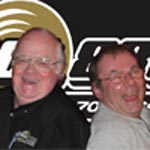
There were also the regular features, such as the instrumental at the top of each hour. On this occasion, they are Jorgen Ingmann’s “Apache” and the Challengers’ “Deadline”, the latter the theme song of Ed’s first regular show, back in 1963 in Flin Flon, Manitoba. You will also hear instrumentals by Floyd Cramer, Duane Eddy with the Ventures, Cliff Richard’s Shadows and Neil Young’s Squires. Called “Mustang”, it was from Neil’s first recording session, recorded by retired CHQT DJ Bob Bradburn, back in 1963 when he was at CKRC Winnipeg.
This recording originated from CHQT’s studio feed to the local cable company, prior to audio compression and transmission as Edmonton’s only remaining AM stereo station, one of two left in Alberta. It is fed by cable on the FM band to all cable TV customers. The recording was made directly from an FM receiver to the Hi-Fi tracks of a VHS tape. It was digitally mastered from the same VCR to a CD recorder deck. The resultant CDs were Digital Audio Extracted (DAE) on a computer to 44Kbps stereo .wav files, and edited slightly to create a clean start. The resultant .wav files, along with a sample of the background noise levels, were stored on CD-Rs and shipped to REELRADIO.
Orban Audio Optimized
PROCESSED FOR ONLINE PRESENTATION
Other firsts included are Ed’s first 45, “Bernardine” by Pat Boone from the 1957 movie of the same name. A cut from Marty Robbins’ 1960 album “Gunfighter Ballads and Trail Songs”, the first LP Ed ever bought. “Storm Clouds” by Buddy Knox and the Rhythm Orchids, the first live band performance that Ed ever attended. And the first record from the first “Fabulous Forgotten 45s” show, “Reveille Rock” by Johnny and the Hurricanes.
This show ends with what, quite fittingly, remains as the last song that Ed has, to date, played on the air, “Rock and Roll is Here to Stay” by Danny and the Juniors. In between, there is “Short Fat Fannie”, “Mohair Sam”, “Susie Darlin'”, “Fannie Mae”, “Pony Time”, “Mule-Skinner Blues”, “Ebony Eyes”, and “Running Bear” by Johnny Preston, with backgrounds by the Big Bopper. There is also some “nice and easy” Jerry Lee Lewis, a great 1964 Beatles album cut, Simon and Garfunkel before they were S&G, the Dell-Vikings, a great Lesley Gore song I haven’t heard since it was a hit in 1964, a Canadian hit by one of Edmonton’s greatest DJs, the late Barry Boyd, and a classic Bob Newhart bit. Barry Mann sings “Who Put the Bomp” but try and guess who sings the answer song that follows, before you hear it back-announced. The biggest feature of the show is a four song tribute to Buddy Holly, Richie Valens and the Big Bopper, including a 1959 tribute, “Three Stars”, by then-KFXM San Bernardino DJ Tommy Dee.
At the time, cool880.com had a Personalities page for Ed, where he listed his favourite DJ as Wolfman Jack in the days when he was only on XERF. Ed plays a Wolfman bit from the “American Graffiti” soundtrack that also intros “Buster Brown” for him.
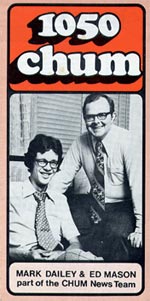
Ed’s career began part-time at CFAR Flin Flon, in northern Manitoba, where his father was Chief Engineer, and was on the air when News broke of President Kennedy’s assassination and Oswald’s killing. He soon hosted Club 590, an evening teen show, and then moved to AM Drive on CHTM in Thompson, Manitoba (1965-66), CKSA Lloydminster, Alberta (1966), back full-time at CFAR (1966), CHAT Medicine Hat, Alberta (1967), middays at CFPA Thunder Bay, Ontario (1967-68), AM Drive CHOV Pembroke, Ontario (1968-70), and then four years at CKDA Victoria, quickly moving into News and then News Director. Most of 1974 was spent at CHUM covering all News shifts, including working with the legendary Dick Smythe, Jungle Jay Nelson’s AM Drive Newsman. But beginning February 3, 1975, Ed has been AM Drive News on CHQT Edmonton.
Picture
CHQT was the first of many media ventures of Edmonton surgeon Dr. Charles Allard when the station signed on August 19, 1965. Like many such stations of the time, the Q stood for Quality as in “beautiful music” as it was then known. Around 1990, it was finally replaced with very light rock including a heavy dose of softer Oldies, but switched to straight Oldies as Cool 8-80 in late June 2001. Its first ratings period, with Bob Bradburn on AM Drive, scored a 7.3 Share, making it the most-listened to music-based AM station in Canada.
This exhibit is UNSCOPED, meaning that all the music is included. We are required to pay a fee for each listener for all musical performances on this recording. Plus, we must also pay the cost of Internet bandwidth to deliver it to you. We are a user-supported organization, and if you enjoy this exhibit, please say thanks with your support.
As part of the new format, Ed was given 10:00 a.m. to noon on Sundays, with complete creative freedom. He did every show live, even when he was supposed to be on vacation. The music was primarily from Ed’s collection, which he painstakingly restored for airing. He also voice-tracked the “Sixties at Six” for an hour every weekday evening. Both shows had no requirements for Canadian Content.
Edmonton is Canada’s most northerly major city, with a metropolitan population exceeding one million. It is the capital of Alberta, Canada’s second most westerly province that includes much of the Rocky Mountains and most of Canada’s Oil and Natural Gas reserves. Summer days do get warm, as you will hear if you translate the Celsius temperatures to Fahrenheit: multiply by 1.8 and add 32.


